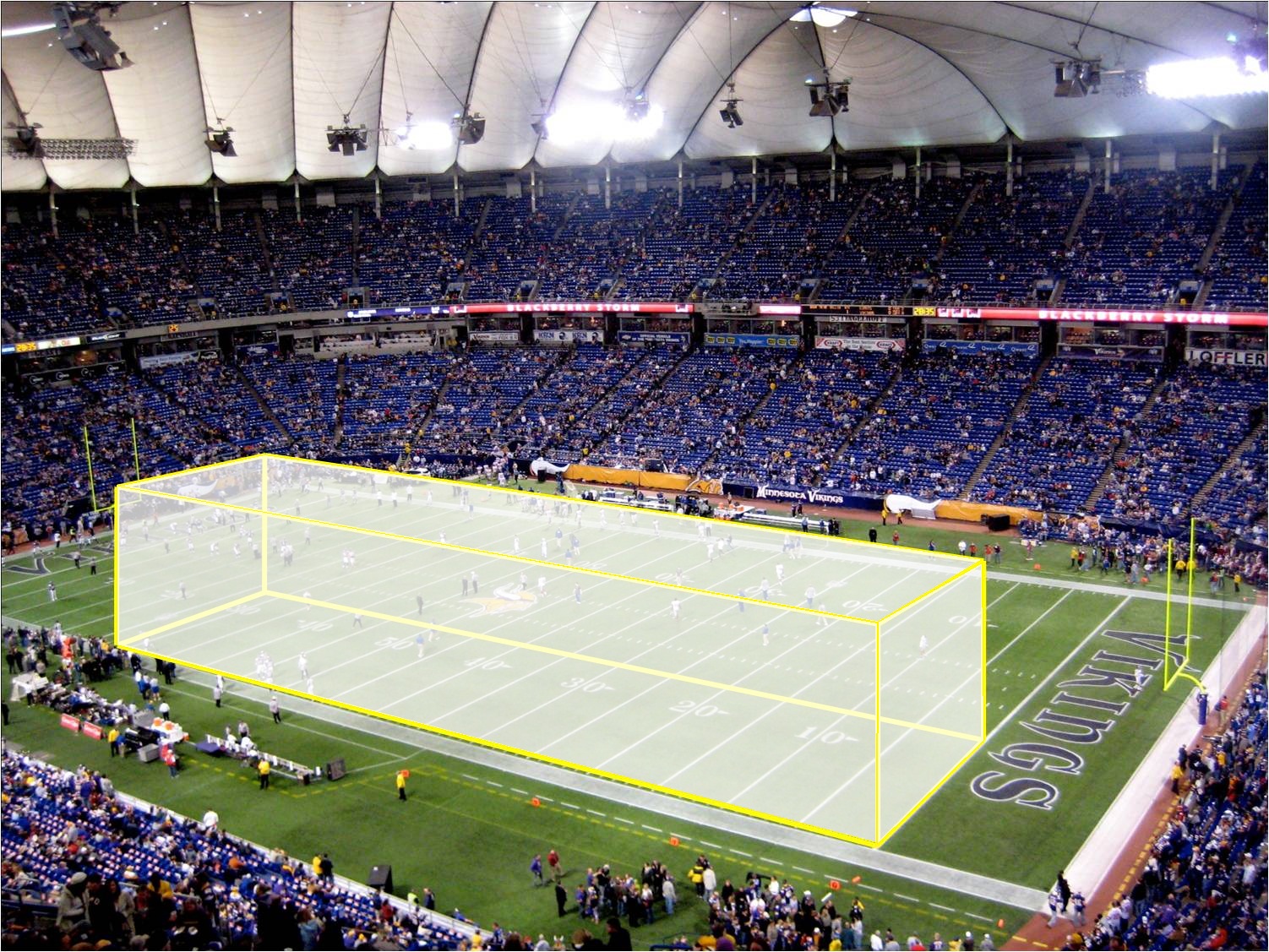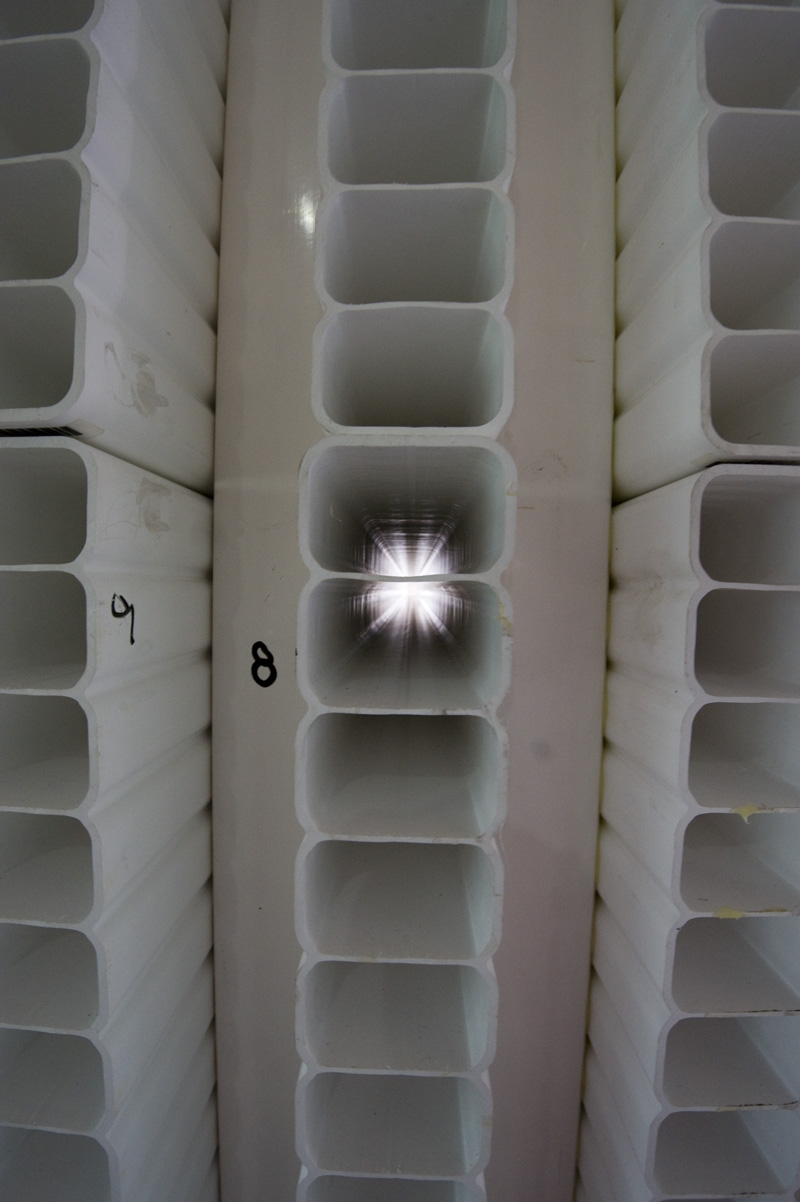NUMI Off-Axis ve Appearance: The Detector

The Outline of the NOvA Detector superimposed on The Mall of America Dome at the H.H.H. Metrodome
The NOvA experiment uses two detectors. The near detector weighs 222 metric tons and is located at FermiLab. The far detector is located near Ash River, MN, just south of the U.S.-Canada border and is 15,000 tons. Theis far detector is composed of 385,000 cells of extruded and highly reflective PVC. Each cell in the far detector is 3.9 cm (1.5 in.), 6.0 cm (2.5 in.) deep, and 15.7 m (52 ft) long! These cells are filled with a liquid 'scintillator.'
The NuMI beam spreads like light from a flashlight, the beam gets wider as it travels away from its source. At FermiLab, the neutrino beams is about six feet wide, by the time it reaches the NOvA far detector it is several miles wide. The detector is placed off-center of the beamline. At the far detector’s off-axis location there is a large concentration of neutrinos at energy 2 GeV. For muon neutrinos this is the energy at which oscillation is most likely to occur



